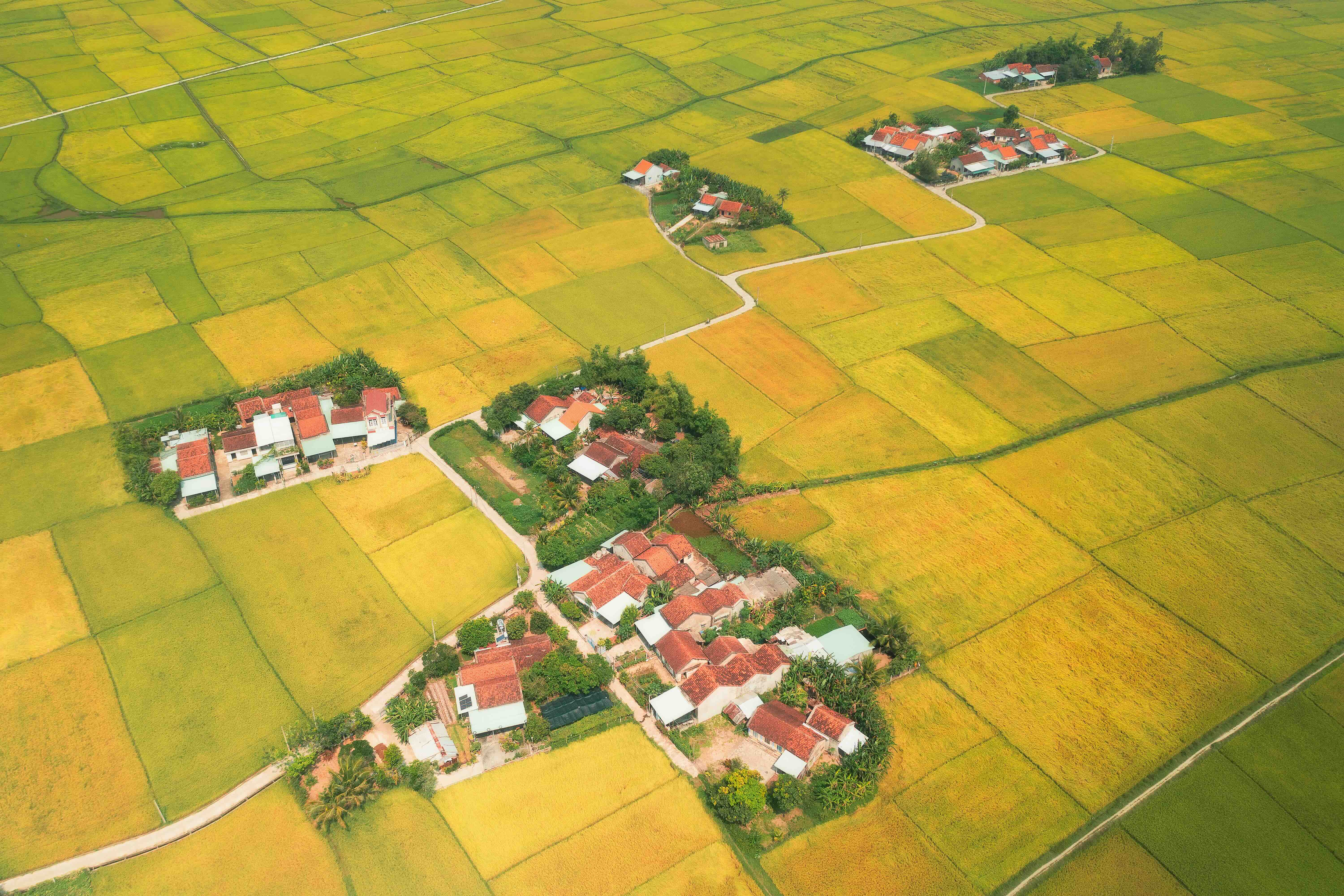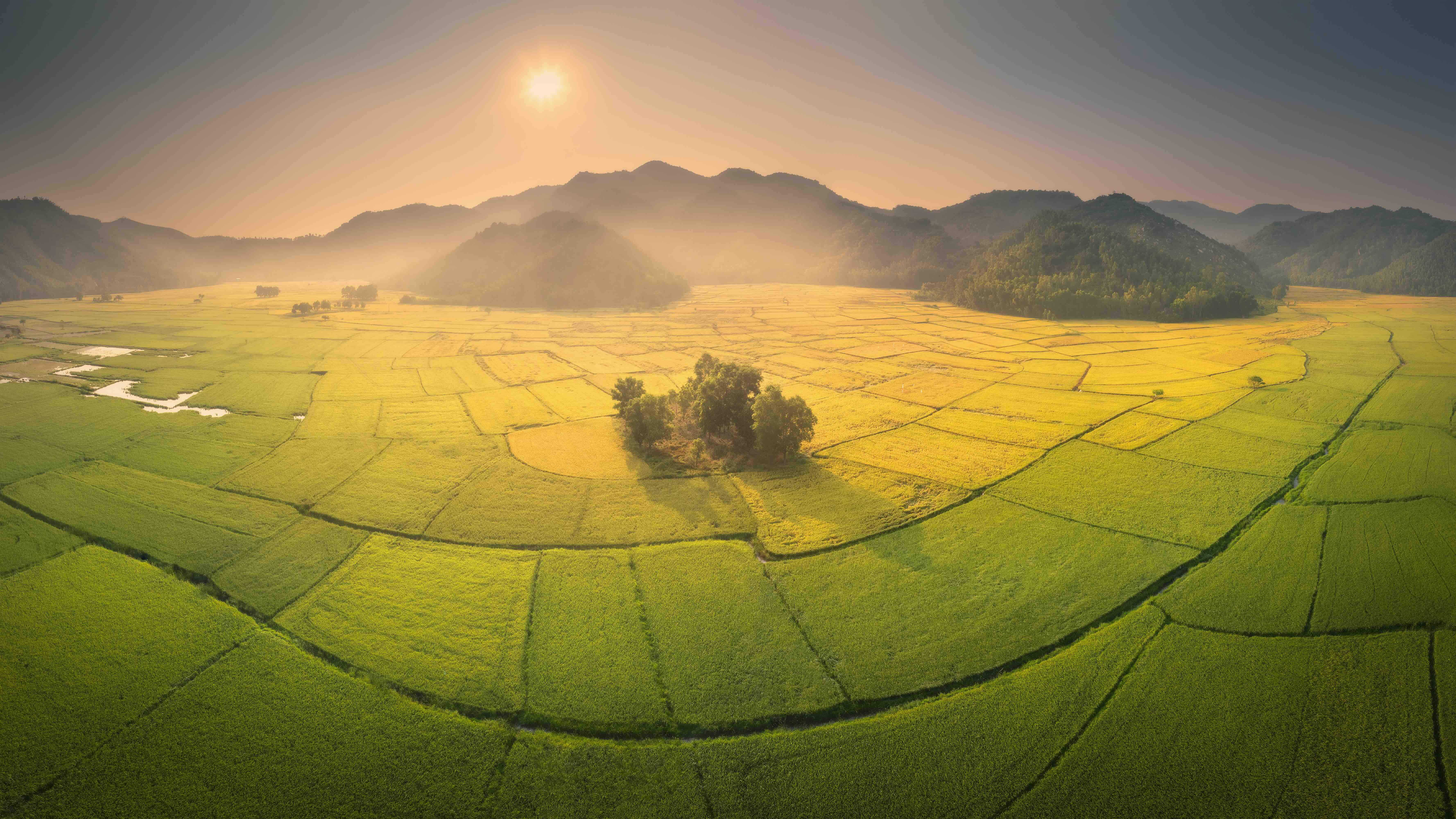Cao Ky Nhan
Experience the golden splendor of Tay Hoa during the harvest season.
Tay Hoa, a rural commune in Dak Lak province, bursts into golden abundance twice a year, when the rice ripens under the sun. Unlike bustling cities, Tay Hoa boasts no impressive architecture or modern convenience but is beautiful in a quiet, grounded way. Its charm lies in the rhythm of the land, the hands that tend it, and the golden grains of rice that have nourished generation after generation.

Thanks to the Dong Cam irrigation system, which channels water year-round from the Ba River, Tay Hoa’s soil remains fertile enough for two stable harvests: winter-spring and summer-autumn. The winter-spring crop is sown in late December and harvested around April. As soon as the fields are cleared, the summer-autumn crop takes root and is ready by September. No matter the season, when harvest comes, Tay Hoa seems to shimmer in a new light, wrapped in golden hues, sun-drenched, vibrant, and full of life.
I returned to Tay Hoa just as the harvest season began. The sun had yet to rise above the mountains, and a silvery mist lingered on the fields. From the village entrance, silhouettes of farmers appeared in the distance – some on motorbikes, some walking with hoes, some pushing carts of straw. The air echoed with cheerful calls, the crowing of roosters, and the murmur of irrigation streams, like the gentle prelude to a countryside symphony.
The scent of ripening rice filled the air with a light, sweet fragrance that lingered and merged with the smell of new straw and moist earth. Harvesters glided across the paddies, blades sweeping through rice stalks with ease, leaving neat bundles of straw scattered across the fields. In the morning light, everything glowed with a soft, golden hue – not dazzling, not blinding, but warm and deeply comforting, like a memory gently stirred.

Tay Hoa still preserves the charm of a traditional village. Along the calm Ban Thach River, golden fields curve like woven carpets around the base of the hills. Water channels meander like silk ribbons through bamboo groves and rice plots. Here and there, simple clay-tiled homes emerge, their mossy roofs whispering of times gone by. In the late afternoon, kitchen smoke drifts gently skyward, completing a landscape beautiful to the eye and intimately familiar to the soul.
Though Tay Hoa has changed – machines now shoulder the work once done by hand, and fewer young people remain tied to the land – its spirit endures. The quiet, the sincerity, the heart of its people still linger. I stood silently behind my camera. Morning light filtered through the mist, catching on the rice stalks so they sparkled like gold. I raised the lens and pressed the shutter – nothing posed, nothing forced. Everything appeared just as it was: pure, unfiltered, and true.
Among these golden fields, childhood memories came rushing back. I remembered following my grandmother into the fields, wading in to gather the rice that remained after harvest. I remembered playing in the mud, the sting of sunlight on my shoulders, the scent of drying straw in the courtyard. I remembered the simple meals – steaming bowls of sticky rice that tasted of warmth and joy. Such seemingly small things, now priceless, especially in this fast-moving world, where we often forget where we come from.
This return to Tay Hoa was more than just a photography assignment. It was a journey home to the breath of the land, to memory, and to all that is familiar. Every image I captured carries a story, a memory, and a message for those far from their rural roots: that there still exists a quiet place where the seasons, the craft, and the spirit of Vietnam are lovingly preserved.










